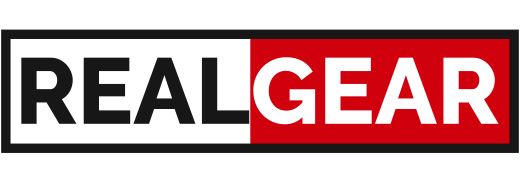You are in the middle of an epic gaming battle, and your internet decides to take a break. When you move to the kitchen, you get no signals. You go to another bedroom, and still no luck. Then, it’s time to call in the reinforcements: Wi-Fi extenders and powerline adapters.
But the million-dollar question is, “Is a Powerline adapter better than an extender?” To answer simply, choosing one depends on your needs and home setup. In this article, we’ll be discussing the pros and cons of each, comparing features to help you decide which one to get. So, let’s get on with it!
- Wi-Fi Extender vs. Powerline Adapter— A Snapshot
- Exploring Wi-Fi Extenders—Boosting Wireless Signal across the Premises
- Understanding Powerline Adapters— Transforming Electrical Wiring into Data Highways
- Wi-Fi Extender vs. Powerline Adapter— A Thorough Comparison
- Best Wi-Fi Extenders in 2023/2024
- Best Powerline Adapters in 2023/2024
- FAQs – Wi-Fi Extender vs. Powerline Adapter
- Conclusion
Wi-Fi Extender vs. Powerline Adapter— A Snapshot
| Criteria | Wi-Fi Extenders | Powerline Adaptor |
| Data Transfer Rate | 54 Mbps to 500 Mbps (actual speeds lower) | 500 Mbps to 2000 Mbps (actual speeds vary) |
| Stability and Reliability | May encounter latency, suitable for casual use | More reliable with lower latency and is great for gaming |
| Coverage Area | Adds 50-75 feet of indoor coverage | Covers up to 300 meters between adapters |
| Installation and Setup | Easy installation customization is available | Easy setup, less customization is available, but secure |
| Cost | $20 to $150-$200, additional features may increase cost | Can exceed $500, price is justifiable for stability |
| Gaming | Fine for casual gaming, but struggles with serious gaming | Optimal for competitive gaming with higher bandwidth |
| User Experience | Mixed experiences come with potential latency issues | Lower latency reported, stable, but skepticism on speed ratings |
Exploring Wi-Fi Extenders—Boosting Wireless Signal across the Premises
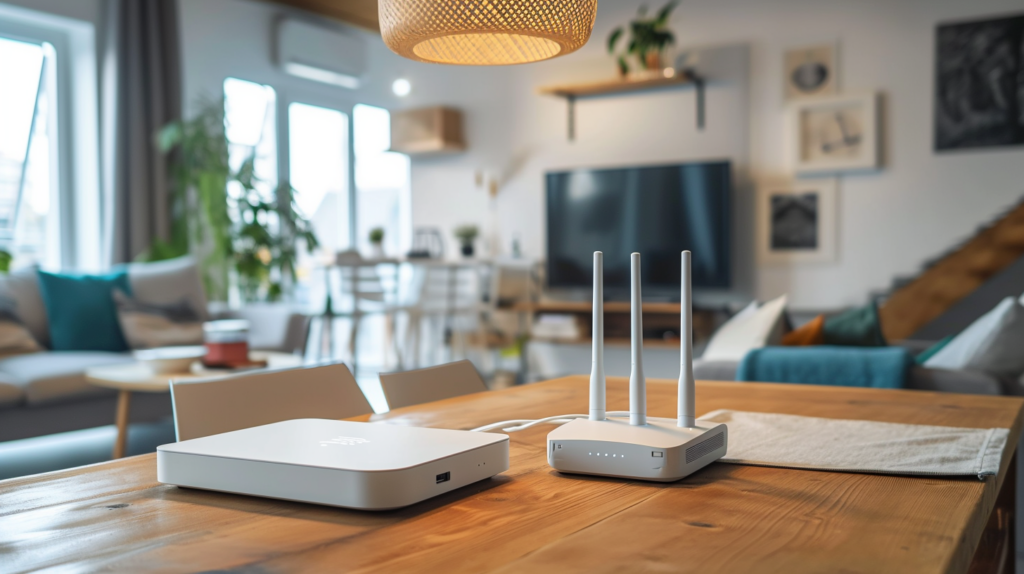
A Wi-Fi extender works by grabbing the Wi-Fi signal from your router and then broadcasting it again. Where you put the extender matters for it to do its job right. You need to stick it about halfway between your router and where you want the signal to reach.
The extender will create a new Wi-Fi zone with its own name in the spot you put it. Moreover, it beefs up the signal and spreads it in places where the router signal is weak or nil. Here’s the lowdown on Wi-Fi extenders—when they’re a win and when they might not be your best bet:
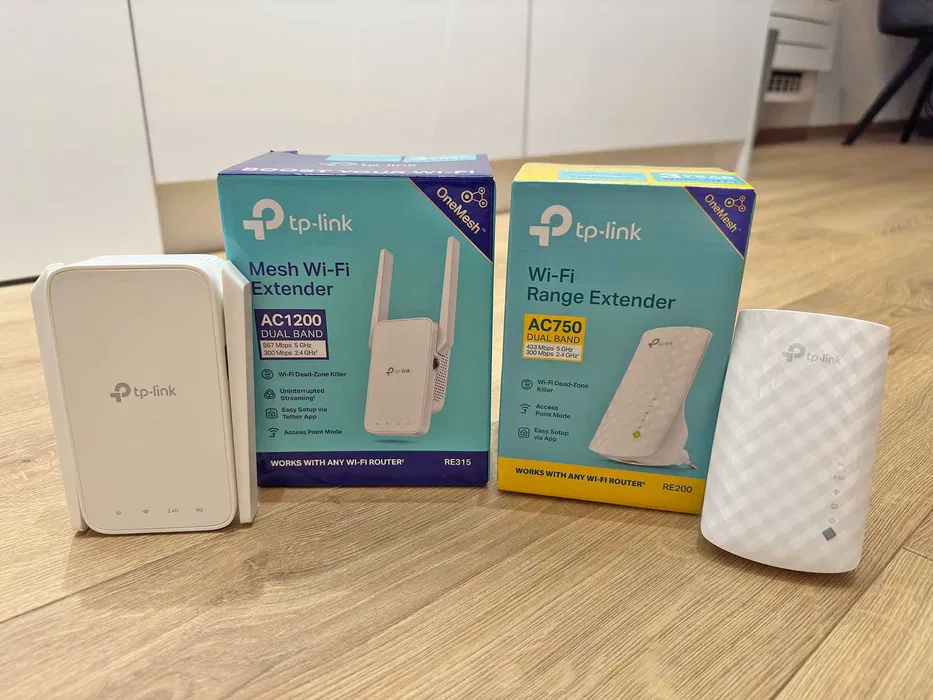
Pros
● Expand Coverage – Wi-Fi extenders can seriously expand your Wi-Fi coverage, especially in big homes or multi-story buildings.
● Improve Wi-Fi Performance – Boosting home internet coverage and speeds, Wi-Fi extenders amp up your overall indoor and outdoor Wi-Fi performance. This is great for streaming, gaming, and downloading files.
● Multiple Users – With multiple channels and frequencies, a Wi-Fi extender makes sure everyone at home can get on the network, no matter where they are.
● Easy to Set Up – Most Wi-Fi extenders have plug-and-play functionality, so they’re easy to set up and use.
● No Need for Extra Gear – Just get a wireless range extender, and your network coverage expands without breaking the bank on additional equipment.
Cons
● Reduced Bandwidth – Wi-Fi extenders might cut your Wi-Fi network bandwidth in half since they need to resend the data they get from your router. This could be an issue if you’ve got loads of devices on your Wi-Fi. (But the high-end extenders don’t have this issue due to dual-band technology).
●Increased Latency – Wi-Fi extenders can make your WiFi network slower by increasing latency, which is the time it takes for a signal to go from your device to your router and back. This can cause lag in gaming and online video chats.
● Need Stronger Signals – Wi-Fi extenders work best with a robust signal from your router. The extender won’t offer much coverage if the router signal is weak.
● Interfere with Gadgets – Wi-Fi extenders might interfere with other gadgets at home, like microwaves and baby monitors, causing performance issues.
Ideal Use Cases
Wi-Fi extenders are ideal for places like bars, cafes, and restaurants with lots of seating or multiple floors. Massive homes with multiple floors or thick walls can also benefit. If you’ve got Wi-Fi dead spots in your spacious house or apartment, a Wi-Fi extender is the best fix.
Understanding Powerline Adapters— Transforming Electrical Wiring into Data Highways
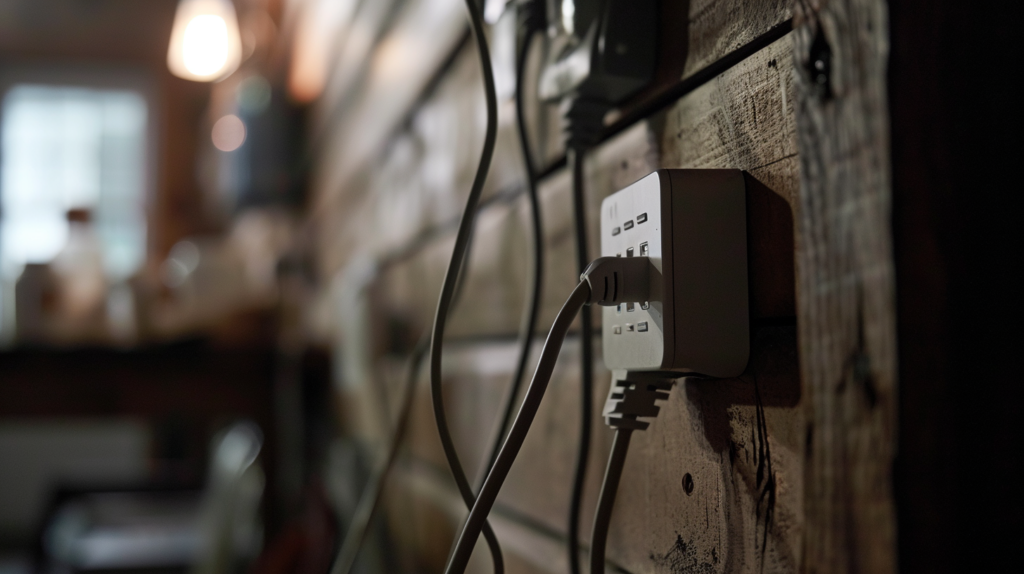
Powerline adapters use your home’s electrical wiring to pass around network data. You need two outlets for these adapters, plugging into your home’s power mains. One adapter must be placed close to your router (the sender), and the other positioned where you want the data (the receiver).
Powerline adapters can connect to your router wirelessly or with a wire, sending the network data through walls or obstacles without blockage. But the speeds you get with the powerline setup depend on how good your home’s wiring is. So, what are the disadvantages of a powerline adapter, and what are its advantages? Check out below:
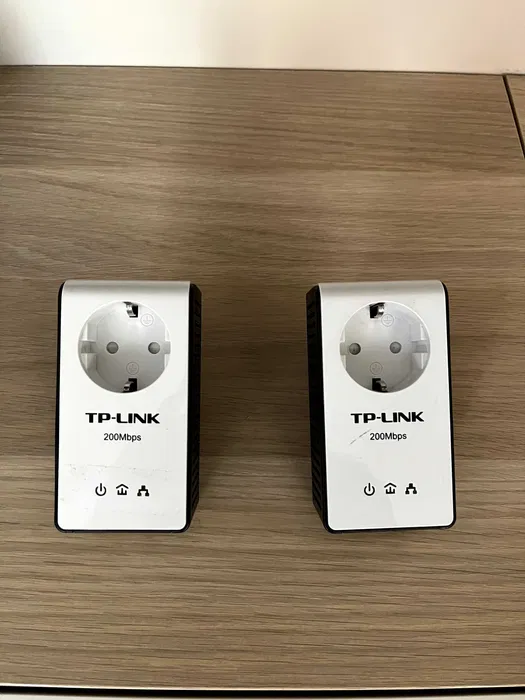
Pros
● No-fuss Wiring – Powerline adapters simply use your existing outlets, so there’s no fuss about adding extra cables.
● Wi-Fi Included – Some powerline models even come with built-in Wi-Fi capabilities.
● Fast and Reliable – Powerline adapters are faster than Wi-Fi, offering speeds up to 1Gbps, and are less prone to interference from other devices in your home.
● Secure Connection – Certain powerline adapters come with encryption features for added safety.
● Budget-Friendly – Powerline options are quite affordable compared to alternatives like MoCA adapters.
● Impressive Range – Powerline adapters can cover distances of up to 300 meters.
● Relieve Wi-Fi Traffic – Using Powerline means less strain on your Wi-Fi, freeing up capacity for other devices.
Cons
● Wiring Quality Matters – Older or damaged home wiring can slow down your powerline network speed.
● Circuit Breaker Limitations – Powerline adapters might struggle to connect across different circuits in larger homes with multiple circuit breakers.
● Electronic Interference Possible – Signal interference can occur from devices like dimmers and power strips, affecting the performance of powerline adapters.
Ideal Use Cases
Powerline adapters offer a secure option compared to Wi-Fi, helping dodge interference from neighbors. Perfect for gamers, they sidestep wireless latency on consoles and computers. Large homes with unstable internet or apartments with crowded Wi-Fi zones can prevent frequent connectivity hiccups, especially with bandwidth-heavy devices.
However, don’t mix up powerline adapters with powerline Wi-Fi extenders. The latter do both jobs – they work as a powerline adapter and extend Wi-Fi coverage. But do Powerline Wi-Fi extenders really work? Yes, a powerline Wi-Fi extender does work. It’s a combo gadget with a sender, sending data through a powerline to where you need it.
The receiver, equipped with a built-in Wi-Fi access point, beams the data straight to your computer. It’s handy for stretching Wi-Fi to spots far from your route, filling Wi-Fi dead zones, and extending the data signal 50 to 100 feet beyond, covering a larger area.
Wi-Fi Extender vs. Powerline Adapter— A Thorough Comparison
So, what is the difference between a Powerline and an extender? It depends on various factors like data transfer rate, stability and reliability, coverage area, installation and setup, etc, of both devices. So, here’s a detailed comparison of powerline adapter vs. Wi-Fi extender for gaming, discussing each of these factors:
1) Data Transfer Rate
Wi-Fi extenders often have slower data transfer rates compared to powerline adapters. They use radio waves, which obstacles like walls and interference from household appliances can hinder. Wi-Fi extender speeds vary, usually ranging from 54 Mbps to 500 Mbps.
Yet, actual speeds tend to be lower due to wireless interference. A 300 Mbps Wi-Fi extender might realistically achieve around 150 Mbps throughput in an ideal setting with minimal interference. To minimize interference, opt for a dual-band or tri-band Wi-Fi extender for better connectivity for all devices.
It enhances both the 2.4GHz signal (with a broader range but slower speed) and the 5GHz signal (with a shorter range but faster speed). Powerline adapters, in contrast, are less prone to interference. However, electrical noise can impact their data transfer rate, especially when plugged into extension leads or near large electrical appliances.
They usually offer speeds between 500 and 2000 Mbps, but actual speeds can be lower due to powerline interference. A 1000 Mbps Powerline connection might achieve around 300–350 Mbps throughput in an optimal, interference-free environment.
But avoid using powerline adapters with power strips, extension cords, or surge protectors, as they can reduce data transfer speeds or halt data transfer altogether. For optimal results, place powerline adapters on the same mains circuit. And keep the distance short at a max of 150-200m to prevent signal strength from diminishing.
2) Stability and Reliability
Wi-Fi extenders may be less dependable than powerline adapters because of radio wave limitations. They might also encounter more latency, which is especially problematic for real-time activities like gaming and video streaming.
A Wi-Fi extender is usually sufficient for casual activities like social media, surfing, music, and calls, and you won’t notice issues in a shared wireless space. However, if your internet use involves heavy data tasks or gaming, that’s when drawbacks become apparent.
Wi-Fi extenders, using the same wireless frequency, can suffer from high latency, impacting gaming performance. On the other hand, powerline adapters are more reliable with lower latency, making them a superior option for gaming and streaming.
This is because, being a wired medium, it is less susceptible to latency issues, offering a better gaming experience despite being shared.
3) Coverage Area
Typically, Wi-Fi extenders add around 50-75 feet of extra indoor coverage. The actual range, though, depends on factors like Wi-Fi standards, signal strength, and obstacles. A stronger router signal enhances extender performance.
Placing the extender midway is critical for optimal coverage; e.g., a 1000 sq ft extender covers around 500 sq ft for specific areas. Conversely, a powerline adapter can cover up to 300 meters (984 feet) between adapters.
It simplifies targeting devices without distance concerns but faces interference risks with longer electric wiring. Powerline uses home wiring, while Wi-Fi extenders capture and re-transmit signals, with the choice depending on factors like transmission mode and customization needs.
4) Installation and Setup
For both Wi-Fi extenders and powerline adapters, installation and setup are easy. With a Wi-Fi extender, you get a model that plugs directly into a power socket or a larger unit that you must place on a desk or shelf. In contrast, with powerline adapters, you plug one into a power outlet and connect it to your router using an Ethernet cable.
For additional Internet access in different rooms, plug more powerline adapters into power outlets. However, regarding management and customization, Wi-Fi extenders have the upper hand.
You can personalize priorities, allocate bandwidth, and schedule usage to fit your needs. Achieving the same level of customization with a powerline adapter is challenging as it requires pairing and connecting the adapters. Besides, you’re likely to stick to its default configuration.
But you’ll get powerline adapter security features for a safe network in the adapters, especially encryption. This feature jumbles the data on the powerline network, making it readable only by devices with the right key. So, even if someone detects the signal, they can’t make sense of the data without the encryption key.
5) Cost
The cost of Wi-Fi extenders and powerline adapters varies based on brand, speed, range, and additional features. Wi-Fi extenders range from $20 to $150-$200, while powerline adapters can exceed $500.
Advanced features like dual-band or tri-band Wi-Fi, more Ethernet ports, or power-saving options may also increase the cost of Wi-Fi extenders.
On the other hand, the powerline adapters can be pricier. But they often deliver a more stable and reliable connection, particularly in areas with weak or no Wi-Fi signal. This reliability could justify the higher price for some users.
6) Gaming
Wi-Fi extenders are fine for casual gaming but might struggle with serious gaming due to lower bandwidth (they can halve the bandwidth) and higher latency. Despite amplification, they keep users on a wireless connection, making them susceptible to signal dropouts and congestion.
On the other hand, powerline adapters guarantee top-level performance with speeds reaching 2000 Mbps. This is crucial for competitive gaming, where every millisecond counts. Powerline adapters also offer rapid, lag-free network access to difficult-to-reach spots where running an Ethernet cable isn’t feasible, all without sacrificing speed.
Therefore, serious gamers are better off with powerline adapters, which provide higher bandwidth and lower latency, meeting the demands of intense gaming. With that being said, they aren’t guaranteed to work in every house or situation. Gamers can’t always automatically rely on them.
In some instances, as a last resort, Wi-Fi extenders might be necessary if all other options are exhausted, and a Wi-Fi connection must be maintained. For less latency-sensitive, slower-paced online games, they function acceptably.
7) User Experience and Feedback
To learn the user experience and feedback for Wi-Fi extenders and powerline adapters, we held a lively online debate with users on r/HomeNetworking. What’s more, we checked user feedback on various forums comparing both gadgets.
A user shared that the Wi-Fi didn’t reach their room in their house, so they got a TP-Link AC750 range extender. It was good for streaming on Xbox, but gaming suffered due to high latency. They switched to a powerline adapter, and the ping dropped from 200 ms on Wi-Fi to 84 ms, solving the gaming issue.
Some users argue that powerline adapters boast lower latency than Wi-Fi but lack the reliability and speed of alternatives like Ethernet. On ResetEra, a user shared that powerline adapters work in certain rooms but not others, expressing skepticism about the advertised speed ratings.
They argued that even with good wiring, achieving the stated speeds is unlikely and emphasized that powerline adapters are better for stability than high speeds. Another user suggested that an efficient router is crucial for faster connections rather than a powerline adapter or a Wi-Fi extender.
They emphasized that routers can be relatively inexpensive as many quality routers under $200 offer advanced features. For speeds below 200 Mbps or non-gigabit Ethernet devices, powerline adapters at a lower cost may be preferred.
Now that you’ve got the lowdown on Wi-Fi extenders and powerline adapters let’s talk about the top contenders that give you the best bang for your buck. We’ve covered two stellar Wi-Fi extenders and two powerline adapters worth checking out.
Best Wi-Fi Extenders in 2023/2024
1) TP-Link RE705X – It is a plug-in dual-band Wi-Fi 6 extender covering 2,000 sq. The extender offers speeds up to 3 Gbps (2402 Mbps on 5 GHz, 574 Mbps on 2.4 GHz) using a wider 160 MHz channel. It also provides OneMesh network support. A smart signal indicator aids in optimal placement. While setup and management are easy with the TP-Link Tether app for Android and iOS.
2) Netgear Nighthawk X6S – A tri-band Wi-Fi 5 extender covering 2500 sq with speeds up to 3Gbps on 2.4GHz and two 5GHz bands. This prevents performance issues by avoiding communication conflicts on the same channel as your devices. It also includes one USB and four 1 Gigabit ports.
Best Powerline Adapters in 2023/2024
1) Netgear Powerline 2000 – One of the best powerline adapters for gaming, the NETGEAR PLP2000 offers up to 2000 Mbps speed with a ping as low as an Ethernet network. It offers lag-free gaming with an uninterrupted, stable connection extending to multiple floors. Besides, it comes with a noise filter for the AC outlet to reduce electrical interference.
2) Devolo Magic 2 WiFi 6 – A question may nag your mind, like “Can I use a Powerline adapter as an extender?” While talking about powerline adapters. The answer is yup, you totally can, especially if it comes with Wi-Fi features.
Take the Devolo Magic 2 WiFi 6, for instance. It’s a hybrid powerhouse, combining powerline and Wi-Fi capabilities, supporting Wi-Fi 6 for a whopping 50% boost in network speeds. The kit includes a LAN adapter connecting to your router and another WiFi 6 adapter broadcasting wirelessly.
FAQs – Wi-Fi Extender vs. Powerline Adapter
Why Are My Powerline Speeds So Slow?
Your powerline adapter speed might be slow due to interference from large home appliances. Moreover, the condition of your home’s AC wiring can influence its performance.
Surge protectors or power strips can also interfere with the frequencies they rely on. Besides, the signal strength diminishes if the distance between the adapters is greater than 300 m. But keeping the distance under 200 m is recommended to maintain better performance.
Do Powerline Adapters Increase Wi-Fi Speed?
Powerline adapters won’t directly boost your Wi-Fi speed. But they can expand your network using the electrical wiring, potentially enhancing coverage in weak Wi-Fi spots. In these areas, devices can connect directly to the router through powerline adapters, avoiding reliance on the weaker Wi-Fi signal.
Additionally, powerline adapters ease congestion on the Wi-Fi network. Devices connected via powerline adapters no longer contest for bandwidth with wireless-connected devices, improving overall network performance.
How Do I Extend My Wi-Fi Range through House Wiring?
To extend your Wi-Fi range through your house’s wiring, you can employ powerline adapters. These gadgets utilize your home’s electrical wiring to establish a network connection, where your electrical wiring substitutes a significant portion of Ethernet cable.
Is Powerline Speed Worse than Wi-Fi?
No, it isn’t. In fact, it’s the opposite. Under optimal circumstances, the powerline generally outpaces and offers greater stability than Wi-Fi. Yet, the actual speed hinges on the powerline adapter model and your powerline environment conditions.
While Wi-Fi is usually simpler to configure and provides a less cluttered experience, you might compromise on speed and stability.
Conclusion
Between Wi-Fi extenders and powerline adapters, the victory lap goes to your needs. A Wi-Fi extender can be your ideal bet if you need a signal boost for dead zones. But if you’ve got a large house full of devices sucking the Wi-Fi bandwidth and stability issues, a powerline adapter is your hero. This is mainly for hardcore gaming and lag-free streaming. The ball’s in your court, so it’s your call now!
